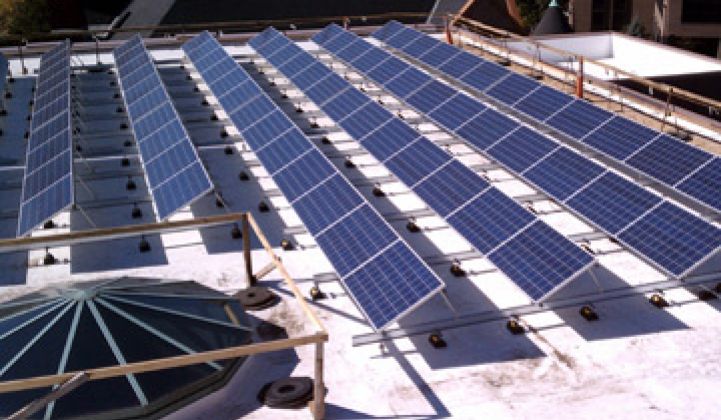Unirac has a 30 percent market share of the North American solar racking market. Although mounting systems are not the most exciting components in the solar industry, a 30 percent market share is still impressive.
Mounting systems can account for 5 percent to 10 percent of the cost of the entire installed solar system, according to Juan Suarez, Director of Engineering and Program Management at Unirac. That borders on the same proportions as the $6 billion inverter market. And that makes mounting systems a large growth market with its own set of innovations and competitive pressures.
And as module prices continue to drop, balance of system costs move more to the foreground -- and that applies to inverters, wiring, and mounting gear.
There's also a competitve advantage to be had for vertically integrated solar developers to supply their own racking equipment like SunPower and First Solar, which bought tracker startup RayTracker for an undisclosed (likely modest) sum in January. (Speaking of solar, come join us at the Solar Summit March 14 and 15 in Palm Springs. SunPower founder Dick Swanson will deliver the keynote address.)
Unirac is 10 years old and has installed a total of 700 megawatts in its corporate history. Last year, Unirac was acquired by Liechtenstein's Hilti Group, a multi-billion dollar global construction tool supplier.
We'll hone in on one specific project that Unirac worked on to show some of the unique challenges of this part of the solar business.
Unirac just provided a custom racking solution for the recently completed 600-kilowatt solar array atop the Minneapolis Convention Center that Suarez called, "particularly challenging." This system is one of the largest PV solar installations in the Midwest as well as one of the largest commercial rooftop systems to feature a 30-degree tilt. The array uses 2,613 PV modules.
The challenges:
- The Minneapolis Convention Center's northern latitude required a mounting solution that could provide an acute angle tilt to best capture solar gain.
- The site had an irregular rooftop design with slopes in multiple directions. The buildings were "not well oriented and had lots of obstructions."
- The location was prone to extreme weather events such as snow drifts up to eight feet high, loads of more than 100 pounds per square foot, and basic wind speeds of 90 to 120 miles per hour.
Unirac, working with Westwood Renewables on the project, designed and built a customized racking system configured to a 30-degree tilt to optimize solar output as well as providing structural integrity without unnecessary costs.
Unirac is one of the few solar infrastructure firms, according to Suarez, that has a wind tunnel at their facility. Structures and racking systems must be designed around once-a-decade climactic conditions like 50-mile-per-hour wind gusts and immense snow loads. Snow loads might be as much as 30 lbs. per square foot -- that's typical for Colorado and New Jersey.
Additional weight on the rooftop (i.e., dead load) increases seismic risk. Builders and building owners are "always trying to reduce dead load." The entire system with solar panels is in the two to three pounds per square foot range.
But especially on older buildings -- you really don't want to add weight. "Being light on a roof is a critical component. The benefit overall is that you make more roofs available if you're lighter," said Suarez.
Suarez spoke a bit about reducing cost. While modules and inverters stay the same in Florida or Minnesota or Southern California, racking systems have to change depending on the location. Cost per watt is important according to Suarez, "but Total Cost of Ownership is just as important." If the product can be pre-assembled and designed to minimize high-cost labor (which accounts for as much as 40 percent of the installation cost), then design is more important than initial cost per watt.
While solar module manufacturers have a few standard products that they look to churn out in the millions, every solar installation is unique. According to Suarez, "We take a design-build approach; every project is different and we have to partner closely with the systems developer."
Unirac also provided racking systems for the beautiful parking structure at the San Jose, California airport (see picture below).
According to an anonymous solar consultant with knowledge of these matters, "Balance of Systems products developed in FIT-less markets [like the U.S.] are more cost effective than those developed in FIT-ted markets." Ucilia Wang does her usual strong work here in her article on mounting systems.
Greentech Media's Solar Summit next month in Palm Springs covers the entire solar value chain, including balance of system. Check out the stellar lineup of speakers. We hope to see you there.
San Jose Airport Parking Structure with PV racking from Unirac and PV panels from Canadian Solar.



